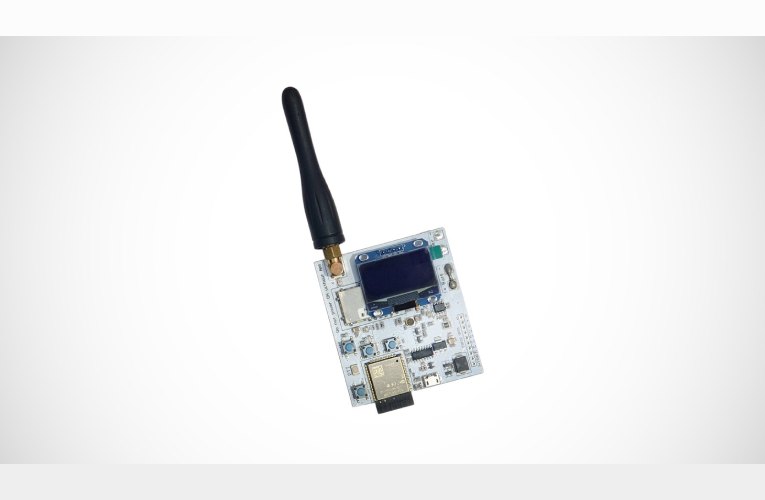
SOCORAD32, aka the ESP32 Software Controlled Radio available on Crowd Supply, is a professional-grade hackable walkie-talkie for amateur radio exploration, voice, and data communication using simple AT commands. Offering a hackable open-source, this amateur radio-tailored device features all of the operations of a standard walkie-talkie. With the onboard dedicated Push To Talk (PTT) button, SOCORAD32 can be used straight out of the box without touching a single line of code.
This device employs a proprietary RF design featuring the RDA1846 IC that is the same IC used in commercial walkie-talkies such as in Baofeng, Motorola and Hytera, and because of this, SOCORAD32 can communicate with commercial walkie-talkies with ease. Its frequency range covers the license-free bands for most countries. Moreover, using uncomplicated AT commands, users can configure the audio volume, tone squelching, CTCSS, CDSS codes, etc.
Key Features of SOCORAD32
- UART configurations:
- Frequency Range: 400 mhz - 470 mhz (covers most allocated license-free walkie-talkie bands internationally)
- Frequency Step: 5 K / 6.25 K / 12.5 K / 25 K
- RF Output Power: 2 W / 0.5 W (+5 KM @ 2 W)
- Voice Encryption (scrambling): 8 type
- Voice Compression/Expansion
- SMS Receive/Transmit
- CTCSS (38 group) + CDCSS (83 group)
- Automatic elimination tail
- Volume adjustable (1-8)
- SQ level adjustable (0-9)
- MIC sensitivity level adjustable (1-8)
- Sleep Mode (0.1 uA)
SOCORAD32 can also communicate data, so you can explore the amateur radio frequencies for IoT or send texts. Texts can be read via the onboard OLED screen or via a Bluetooth-connected mobile device. In addition to all of this, it utilizes powerful ESP32 Bluetooth functionality. All SOCORAD32 settings can be adjusted via a connected mobile device using a serial Bluetooth app of any choice, while also being adjustable via the dedicated physical buttons. You can store as many channels as you would like in the onboard memory of the ESP32.

